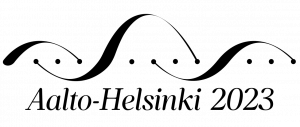
You probably have heard of iGEM at this point or never heard of it; rest assured, we’ve got you covered. iGEM is the right platform for you whether you have a background in biology or feel like that specialty paired with biology can create something useful. International Genetically Engineered Machine (iGEM) originates from Massachusetts Institute of Technology (MIT) in Boston, USA 2003, where students designed biological systems to make cells blink. This university design course became a summer competition with five teams in 2004. Twenty years later, it’s grown to 400+ teams from 45+ countries.
iGEM is the right platform for you whether you have a background in biology or feel like that specialty paired with biology can create something useful. International Genetically Engineered Machine (iGEM) originates from Massachusetts Institute of Technology (MIT) in Boston, USA 2003, where students designed biological systems to make cells blink. This university design course became a summer competition with five teams in 2004. Twenty years later, it’s grown to 400+ teams from 45+ countries.
Nowadays, iGEM provides a platform for students from different fields to engage themselves in a challenging saga to design and implement innovative projects using experimental work, modelling applications, and cutting-edge design techniques to create a solution to a pressing issue of their choosing that they deem synthetic biology can offer an answer for. We highly encourage you to read more about iGEM on their website: https://igem.org/.
Aalto-Helsinki iGEM team 2024
From forming our team in February, we noticed that although we were nine different people from various fields, we shared a common passion: channeling our knowledge and expertise to the medical field. Even though we did not know which specific area we wanted to focus on, we needed at least a sense of direction and began the story.
We came across compelling statistics directing us toward cancer during the topic ideation process. This was because research showed us that even though science has made groundbreaking advances in treating cancer, it is still amongst the top five disease groups contributing to the total burden of disease. Moreover, global cancer incidents are projected to increase by 77%, which means a total of 35 million annual cases by 2050. Therefore, we conclude that cancer remains a pressing issue affecting not only people diagnosed with cancer but also their family and friends, so we would like to put our efforts into finding a solution that can help alleviate this ever-growing problem.

After evaluating the feasibility of different ideas and consulting experts, we got inspired by one of the ongoing research projects at Aalto University. This research explores the existing adhesive proteins naturally found in mussel foot and spider silk, which have many biomedical uses. After thoroughly investigating the different applications, we understood that the drug delivery potential aligns more with our initial idea. Therefore, we started developing our bioadhesive-inspired LLPS-based drug delivery system.
Since our main target is cancer and developing a more sophisticated treatment option, we selected a widely used chemotherapeutic agent, named Doxorubicin to test our system and determine whether we can deliver it in a targeted and controlled manner. One of the main drawbacks of this drug is that it causes cardiotoxicity because it also targets normal cells. Therefore, we chose this drug to test our drug delivery system to determine whether we can deliver Doxorubicin locally.

But is that all?
Although engineering biology is an important part of the iGEM, Engineers should operate at the interface between science and society. Therefore, the key part of this competition is how we can interact and engage with the world and the community that we are targeting. This is called Human practices in the context of the iGEM competition. For this purpose, we have been consulting with stakeholders including industry experts and researchers. We also plan to conduct interviews with medical personnel and cancer patients so we can get a better understanding of the impact of our project in the real world.
So far, we also collaborated with Heureka by holding a workshop for one of their exhibitions. We also participated in the TuKoKe event by TEK as the jury in order to advance and motivate youngsters in using their scientific knowledge for creating and innovating new solutions. Some of our team members also had the opportunity to attend one of the early iGEM meet-ups, the BFH 2024 where they had the chance to showcase our project to others, get suggestions, attend various workshops of the different elements of iGEM. This also gave us a chance to network with different people and even form potential collaborations with other iGEMers.
If you are interested in knowing more about our project and journey, you can check here (https://linktr.ee/aaltohelsinki) to visit our webpage, social media and blog.
We appreciate you taking the time to read!
We would like to express our gratitude to the Helsinki Institute of Life Science (HiLIFE) and the entire University of Helsinki for their support of the iGEM team and its project. Their assistance has been crucial to our ability to take part in the iGEM competition and program. So far, it has been an incredible opportunity and experience for all of us!


